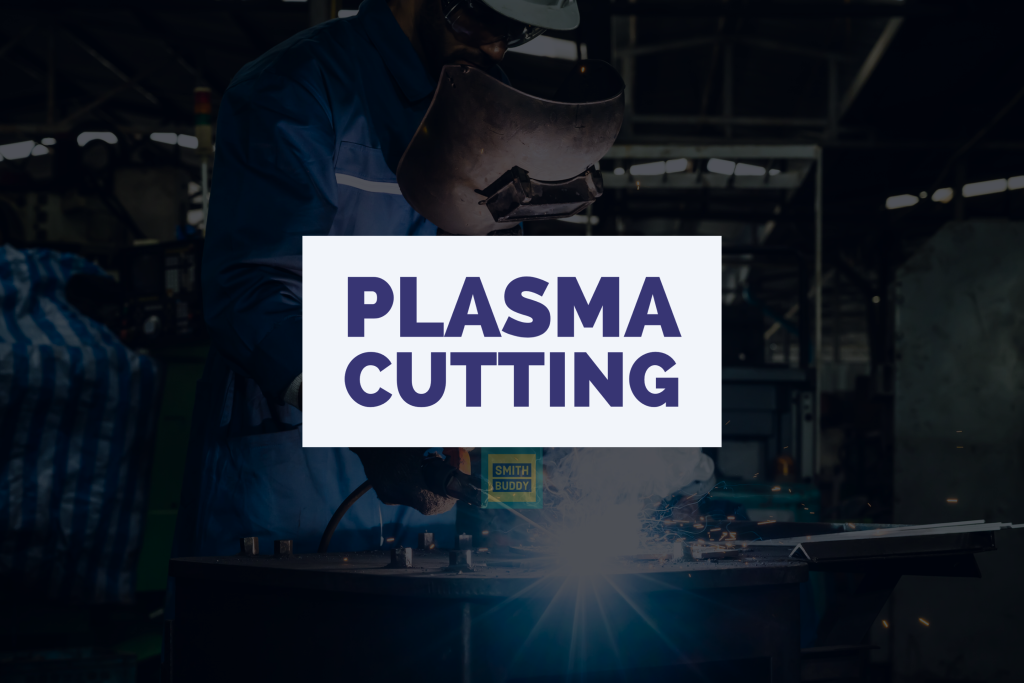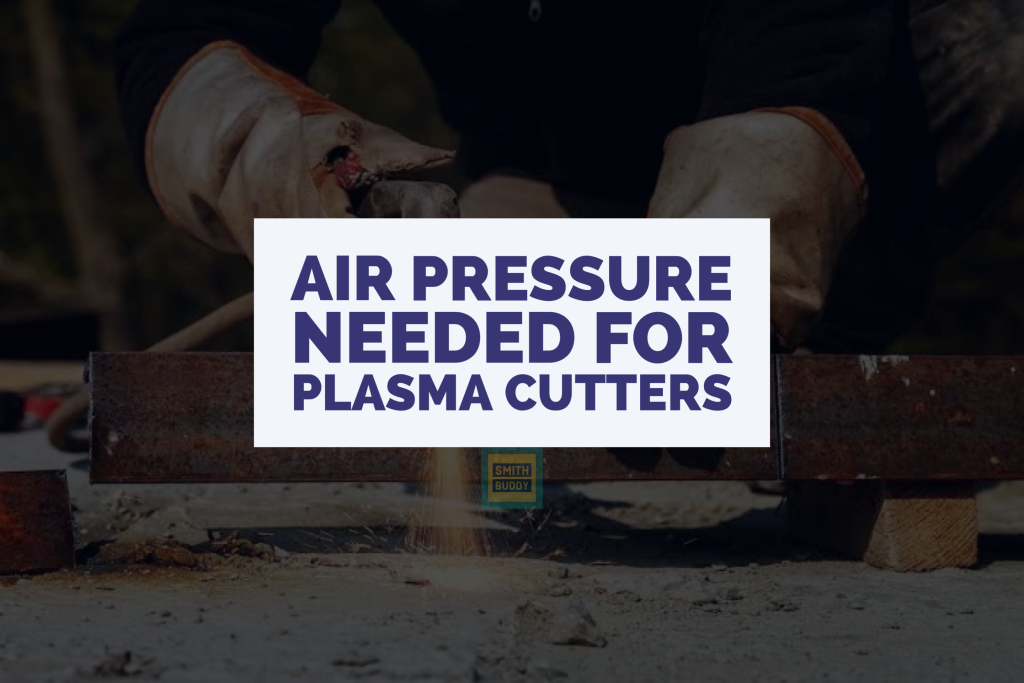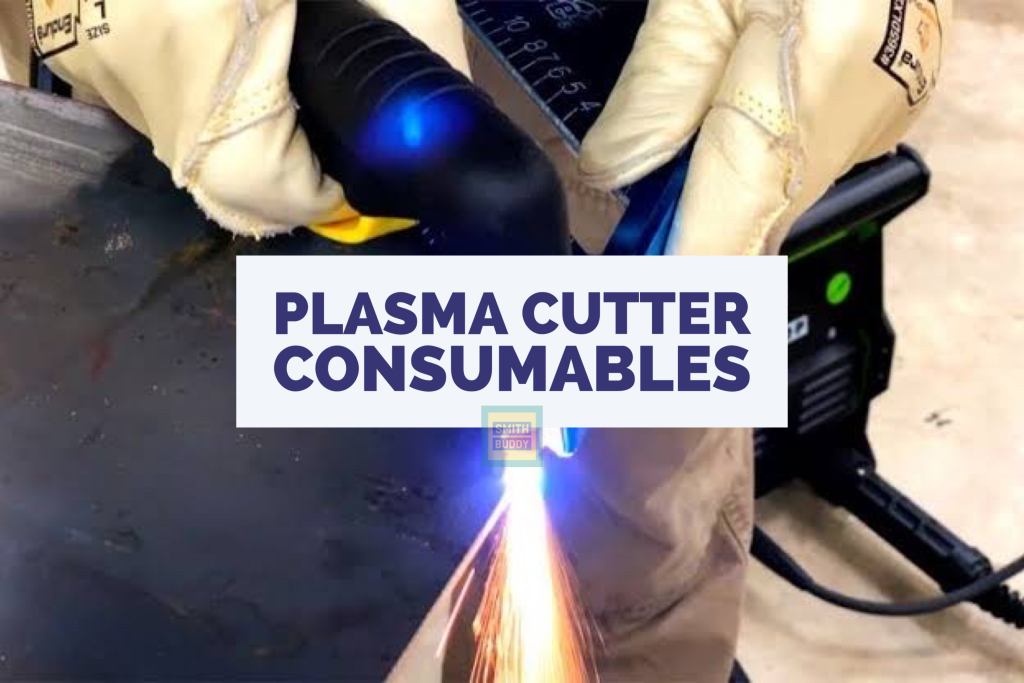When cutting aluminum, plasma cutters are an efficient, economical, and practical choice. Plasma cutters can cut aluminum precisely with great accuracy, making them ideal for creating intricate shapes and designs. Plasma cutters are also high-speed and can cut through thicker aluminum sheets than other cutting methods. With their versatility, speed, and accuracy, plasma cutters are an excellent choice for cutting aluminum.
What is plasma Arc cutting?
Plasma cutting is a type of cutting process used to cut metals using a high–velocity stream of ionized gas (plasma). It is often used for cutting shapes and other materials in a wide range of industries.
Examples of plasma cutting include cutting holes in metal sheets for HVAC ductwork, cutting custom shapes for automotive parts, and cutting intricate patterns for decorative metal art. Plasma cutting is also used for many other manufacturing processes, such as welding and fabricating.

Tips for cutting aluminum with a plasma cutter
For better aluminum cutting experience using a plasma cutter, follow the tips below: For the best cut, try these plasma cutters.
- Clean the aluminum surface to be cut: Before cutting aluminum with a plasma cutter, make sure to clean the aluminum’s surface. This will help the plasma cutter to make a clean and precise cut. If the aluminum is not cleaned, the cut may be rough or contain burrs.
- Set the correct current levels: Before cutting aluminum, it is important to set the current levels of the plasma cutter to the correct level. This will ensure that the plasma cutter is working at its optimal level and will not overheat or cause any damage to the aluminum.
- Use a clean cutting consumable: When cutting aluminum with a plasma cutter, make sure to use a clean cutting consumable. This will help to ensure a smooth and clean cut. It is also important to make sure that the consumable is compatible with the aluminum being cut.
- Adjust the speed of the cut: The speed of the cut is an important factor when cutting aluminum with a plasma cutter. If the speed is set too high, the cut will be rough and uneven. If the speed is set too low, the cut will take longer than necessary. The correct speed should be determined by trial and error.
- Use a shielding gas: A shielding gas should be used when cutting aluminum with a plasma cutter. The shielding gas will help to reduce the amount of heat generated by the plasma cutter, which will help to ensure a clean and precise cut.
- Use the correct nozzle size: The nozzle size of the plasma cutter should also be adjusted depending on the thickness of the aluminum being cut. A larger nozzle size will be required for thicker aluminum, while a smaller nozzle size can be used for thinner aluminum.
- Use the correct cutting angle: When cutting aluminum with a plasma cutter, it is important to use the correct cutting angle. This will help to ensure that the cut is smooth and even. For thicker aluminum, a 45–degree angle is usually recommended, while a 60–degree angle is usually recommended for thinner aluminum.
- Wear safety gear: It is important to wear safety gear when using a plasma cutter. This includes safety glasses, gloves, and long sleeves. This will help to protect you from sparks and debris that may be generated during the cutting process.
Which gas should you use to cut aluminum with a plasma cutter?
When cutting aluminum with a plasma cutter, the correct gas to use is either compressed air or nitrogen.
Compressed air is the most commonly used gas for plasma-cutting aluminum. It is relatively inexpensive and easy to obtain, and it also provides a relatively clean cut. Compressed air is also the least expensive of the two gases, and it does not require additional equipment. The downside to using compressed air is that because it is not as hot as nitrogen, the cut may not be as precise as the one obtained with nitrogen. For a better experience try the refrigerated air dryers.
Nitrogen is a much hotter gas than compressed air, producing a significantly cleaner cut than compressed air. It is also much more expensive than compressed air and requires additional equipment for its use. However, the precision of the cut when using nitrogen is much higher than with compressed air, making it a better option for those who need a high–precision cut.
In conclusion, both compressed air and nitrogen can be used to cut aluminum with a plasma cutter. Compressed air is the more economical choice, while nitrogen is better for those who need a precise cut.
Air pressure required for aluminum cutting
Air pressure is an important factor when it comes to cutting aluminum with a plasma cutter. The air pressure is used to create a contained arc that will heat up and melt the aluminum, allowing it to be cut. The higher the air pressure, the more powerful the arc will be, and the higher the cutting speed and quality of the cut. Here’s a guide on air pressure & its impact.
Below table shows the air pressure required to cut aluminum with a plasma cutter:
| Stainless Steel Thcikness (mm) | Air Compressor Pressure in PSI | AMPS |
| 0.5 | 40 | 20 |
| 1.6 | 50 | 30 |
| 3.4 | 55 | 40 |
| 5 | 60 | 45 |
| 6 | 60 | 45 |
| 8 | 65 | 50 |
| 10 | 70 | 55 |
| 12 | 75 | 60 |
| 16 | 75 | 60 |
| 20 | 75 | 60 |
In general, aluminum requires a higher air pressure than steel to be cut with a plasma cutter. This is because aluminum requires more heat to be cut than steel, which needs a more powerful arc. A good rule of thumb is to use at least 90 PSI to cut aluminum with a plasma cutter.
For comparison, steel can generally be cut at much lower air pressure. You can use between 60-70 PSI to cut steel with a plasma cutter. This is because steel requires less heat to be cut than aluminum, so a weaker arc is necessary.
Overall, the air pressure needed to cut aluminum with a plasma cutter is higher than steel due to the higher heat needed. Using at least 90 PSI will provide a good cutting speed and cut quality when cutting aluminum.
How is sheet metal cutting & different than aluminum cutting?
Metal cutting with a plasma cutter is a process that uses a high–velocity jet of ionized gas to cut through metal. This process can cut through various metals, including steel, stainless steel, aluminum, copper, brass, and other alloys. The plasma cutter can easily cut through these materials due to the high temperature and speed at which the gas is expelled.
Aluminum cutting with a plasma cutter is a process that is used specifically for cutting aluminum, which requires a higher temperature and energy than other metals. The plasma cutter can achieve the higher temperature and energy needed to cut through aluminum due to the increased voltage applied to the cutter. This higher voltage can also provide a faster cut, allowing for a smoother and more precise cut.
The difference between metal cutting and aluminum cutting with a plasma cutter is in the temperature and energy required to cut through the material. Metal cutting with a plasma cutter requires a lower temperature and energy, while aluminum cutting requires a higher temperature and energy. Additionally, the aluminum cutting may require a higher voltage and faster cut to achieve the desired results.
Best plasma cutter settings for aluminum
The ideal plasma cutter settings for cutting aluminum will depend on the type and thickness of the aluminum being cut. Generally speaking, the following settings should be used:
- Plasma torch power: 100–140 amps
- Cut Speed: 50–80 ipm
- Standoff distance (distance between the tip of the torch and the material): .020” – .030”
- Gas type: Air (for aluminum up to 0.25” thick) or nitrogen (for thicker aluminum)
- Pierce height: 40 amps for up to 0.25” thick aluminum and 50 amps for thicker aluminum
These settings will provide clean, accurate cuts with minimal slag and heat distortion. However, you also take care of the safety precautions and avoid every possible mistake people often makes with plasma cutting.
For better results – follow the experts’ tips for finer plasma cutting.
If you are confused about the handheld plasma cutter & the CNC plasma cutter, this infographic would surely help you.

Why is appropriate amperage settings necessary?
It is important to use the appropriate amperage when cutting aluminum with a plasma cutter because the heat generated by the plasma arc increases with the amperage. If the amperage is too low, the aluminum may not be cut properly and the edges may be rough or the metal may not cut all the way through. If the amperage is too high, it can cause the aluminum to warp or melt, resulting in an undesirable result.
A case study
A metal fabrication shop was tasked with cutting a large sheet of aluminum using a plasma cutter. The metal was 1/4” thick and the plasma cutter was set up to cut a 3/4” wide by 4” deep slot.
The main problem was that the The plasma cutter could not cut through the metal. The metal only partially melted, leaving a large jagged edge with a thickness of over 1/4”.
After further investigation, it was determined that the plasma cutter was set up incorrectly. The amperage of the plasma cutter was set too low for the metal thickness and material type. As a result, the plasma cutter could not cut through the metal.
Lesson to Learn: When using a plasma cutter, it is important to know the correct amperage settings and material type. If the amperage is set too low, the plasma cutter will not be able to cut through the material. In this case, the amperage should have been set higher to ensure that the plasma cutter could cut through the 1/4” aluminum.
Conclusion
The plasma arc cutter is an effective and efficient way to cut aluminum. Not only is it capable of making precise, clean cuts, but it can also cut aluminum faster than traditional methods. Additionally, the plasma arc cutter is a safe and cost–effective way to cut aluminum, making it an ideal choice for various applications. With its wide range of benefits, a plasma arc cutter is an excellent tool for cutting aluminum.





